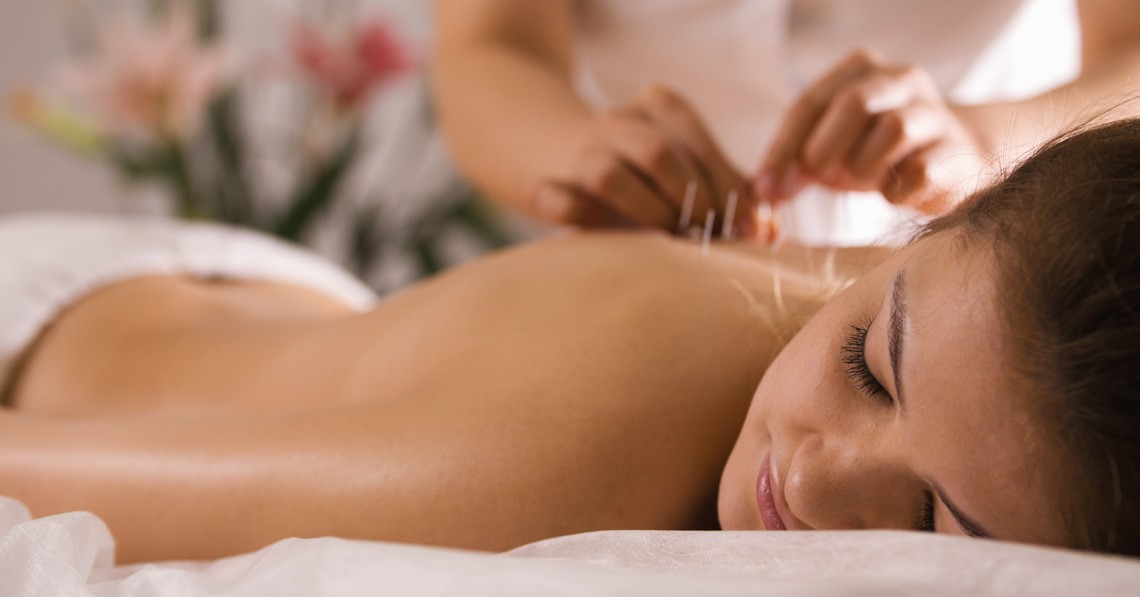 Recovery from exercise has become a new category in fitness, with more tools, techniques and programs available to help people feel better, ease aches and pains, improve range of motion, reduce risk of injury and enhance performance. Among them:foam rollers, compression sleeves/boots, cryotherapy, and more.
Recovery from exercise has become a new category in fitness, with more tools, techniques and programs available to help people feel better, ease aches and pains, improve range of motion, reduce risk of injury and enhance performance. Among them:foam rollers, compression sleeves/boots, cryotherapy, and more.
Another traditional technique that is now being used forexercise recoveryand pain relief is acupuncture. This ancient Chinese practice goes back 2,500 years and involves inserting needles into specific pathways, or meridians, in the body to unblock and balance the flow of energy, or qi. There are 350 acupuncture points in the body to access these meridians.
While that may sound a bit out there, Western medicine supports acupuncture as a way to stimulate nerves, muscles and connective tissue to deliver pain relief. Inserting needles in the skin causes a tiny trauma, which stimulates the immune system, and encourages the body to release endorphins, opiods, neurohormones and more, thereby promoting circulation and healing.
Now broadly accessible, acupuncture may be a valuable form of recovery, stress management or self-care for you. While this practice is not without controversy, some scientific studies show that it is indeed effective for specific conditions. Get the basics on this therapy in this acupuncture overview.
Acupuncture Overview
條件處理
Some of the most common conditions acupuncture is used to treat include:
- Muscle pain and soreness
- Lower back pain
- Knee pain
- Neck pain
- Headaches or migraines
- Sprains
- Arthritis
- Dental pain
- Menstrual cramps
- Respiratory disorders
- Tennis elbow
- 纖維肌痛症
- Sciatica
- Gastric conditions such as peptic ulcer
- Reducing risk of stroke
Acupuncture can be combined with other treatments, and is safe for virtually everyone, with a few exceptions, including individuals with a pacemaker or bleeding disorder and pregnant women. Always discuss any health concerns or conditions with your practitioner before undergoing treatment.
Treatment Process
While each acupuncturist has his/her own approach, typically, protocol is similar and incorporates an initial consultation and exam regarding your symptoms and lifestyle, as well as a discussion about recommended treatment and frequency of sessions. Some conditions may require only a few appointments (6-10), while others may benefit from a longer therapeutic plan.
Patients lie on a padded bed for treatment, and may disrobe or wear a gown. Practitioners should first swab insertion sites with alcohol to clean the areas. Very thin, sterile disposable needles are inserted to various depths in different areas of the body, and typical treatments use five to 20 needles.
Despite the perception, the needles generally cause little discomfort, and some patients say they only feel a mild stinging sensation or don’t feel anything. Acupuncturists sometimes may move the needles or apply heat or tiny electrical impulses.
Usually, the needles remain in place for five to 30 minutes while patients lie still. Removal is simple and painless. Side effects after treatment can include soreness, bleeding and bruising, but patients can also feel relaxed or energized.
Rarer side effects are dizziness, fainting, local internal bleeding, convulsions, hepatitis B, dermatitis, nerve damage, increased pain, and injury to an internal organ. If you experience any of these after acupuncture, contact your healthcare provider immediately.
Finding a Practitioner
Asking for referrals is a great way to find a local acupuncturist, or you can consult the National Certification Commission in Acupuncture and Oriental Medicine (NCCAOM) or the American Academy of Medical Acupuncture. Always choose a licensed professional, who has LAc after their name. And check to see if your health insurance policy covers acupuncture.
Results
Results from acupuncture vary from person to person, but if you’re not experiencing relief after several weeks, this treatment may not be effective for you.